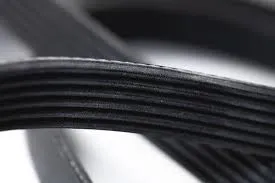- Arabic
- French
- Russian
- Spanish
- Portuguese
- Turkish
- Armenian
- English
- Albanian
- Amharic
- Azerbaijani
- Basque
- Belarusian
- Bengali
- Bosnian
- Bulgarian
- Catalan
- Cebuano
- Corsican
- Croatian
- Czech
- Danish
- Dutch
- Afrikaans
- Esperanto
- Estonian
- Finnish
- Frisian
- Galician
- Georgian
- German
- Greek
- Gujarati
- Haitian Creole
- hausa
- hawaiian
- Hebrew
- Hindi
- Miao
- Hungarian
- Icelandic
- igbo
- Indonesian
- irish
- Italian
- Japanese
- Javanese
- Kannada
- kazakh
- Khmer
- Rwandese
- Korean
- Kurdish
- Kyrgyz
- Lao
- Latin
- Latvian
- Lithuanian
- Luxembourgish
- Macedonian
- Malgashi
- Malay
- Malayalam
- Maltese
- Maori
- Marathi
- Mongolian
- Myanmar
- Nepali
- Norwegian
- Norwegian
- Occitan
- Pashto
- Persian
- Polish
- Punjabi
- Romanian
- Samoan
- Scottish Gaelic
- Serbian
- Sesotho
- Shona
- Sindhi
- Sinhala
- Slovak
- Slovenian
- Somali
- Sundanese
- Swahili
- Swedish
- Tagalog
- Tajik
- Tamil
- Tatar
- Telugu
- Thai
- Turkmen
- Ukrainian
- Urdu
- Uighur
- Uzbek
- Vietnamese
- Welsh
- Bantu
- Yiddish
- Yoruba
- Zulu
Dec . 05, 2024 10:27 Back to list
power steering pump drive belt
Understanding the Power Steering Pump Drive Belt
The power steering pump drive belt is a crucial component in the steering and handling of modern vehicles. It plays an essential role in enabling the power steering system to function effectively, allowing drivers to maneuver their cars with ease and precision. This article delves into the importance of the power steering pump drive belt, its functions, common issues, and tips for maintenance.
What is the Power Steering Pump Drive Belt?
The power steering pump drive belt, often referred to as a serpentine belt, is a rubber belt that connects the engine's crankshaft to the power steering pump. In most vehicles, this belt is part of a serpentine system that also drives other components, including the alternator, air conditioning compressor, and water pump. The belt rotates around multiple pulleys, transferring power from the engine to these vital components.
Function of the Power Steering Pump Drive Belt
The primary function of the power steering pump drive belt is to transfer power from the engine to the power steering pump. When the engine runs, the crankshaft rotates, causing the drive belt to move. This movement activates the power steering pump, which pressurizes the hydraulic fluid used in the power steering system.
The hydraulic pressure generated by the pump assists in turning the vehicle’s steering wheels, reducing the effort required from the driver to steer. This is particularly beneficial at low speeds, such as during parking or maneuvering in tight spaces, enabling a smoother and more controlled steering experience.
Common Issues with the Power Steering Pump Drive Belt
Like all automotive components, the power steering pump drive belt is subject to wear and tear over time
. Some common issues associated with this belt include1. Cracking and Fraying Exposure to heat, oil, and environmental factors can cause the rubber material of the belt to crack or fray. This degradation can lead to belt failure, resulting in loss of power steering.
power steering pump drive belt

2. Slipping A loose belt may slip on the pulleys, diminishing the effectiveness of the power steering. Symptoms of a slipping belt include whining noises when turning the steering wheel and increased effort required to steer.
3. Breakage In more severe cases, the belt may completely break, leading to a sudden loss of power steering assistance. This can make the vehicle challenging to control, especially at low speeds.
Maintenance Tips for the Drive Belt
Proper maintenance of the power steering pump drive belt is key to ensuring the longevity of both the belt and the power steering system. Here are some essential tips
1. Regular Inspections Conduct routine checks of the drive belt for signs of wear, cracks, or fraying. Look for any debris or foreign objects that may have lodged in the pulley system, which could cause unpredictable wear on the belt.
2. Tension Checks Ensure that the belt has the correct tension. A belt that is too loose can slip, while an overly tight belt may cause unnecessary strain on the components it drives. Refer to your vehicle's service manual for guidance on tension specifications.
3. Replacement Schedule Check the manufacturer's recommendations for belt replacement intervals. Generally, serpentine belts should be replaced every 60,000 to 100,000 miles. However, conditions such as high-temperature environments or frequent stop-and-go driving may necessitate more frequent replacements.
4. Professional Servicing If you notice any irregularities or if the power steering system is not functioning as expected, seek professional help. A certified technician can diagnose issues accurately and perform necessary repairs or replacements.
Conclusion
The power steering pump drive belt is a vital link in a vehicle's power steering system, impacting the comfort and safety of driving. By understanding its functions, potential issues, and maintenance tips, drivers can ensure their vehicles remain responsive and easy to handle. Regular attention to this important component will help avoid unexpected breakdowns and enhance the driving experience.
-
Korean Auto Parts Timing Belt 24312-37500 For Hyundai/Kia
NewsMar.07,2025
-
7PK2300 90916-T2024 RIBBED BELT POLY V BELT PK BELT
NewsMar.07,2025
-
Chinese Auto Belt Factory 310-2M-22 For BMW/Mercedes-Benz
NewsMar.07,2025
-
Chinese Auto Belt Factory 310-2M-22 For BMW/Mercedes-Benz
NewsMar.07,2025
-
90916-02660 PK Belt 6PK1680 For Toyota
NewsMar.07,2025
-
drive belt serpentine belt
NewsMar.07,2025

